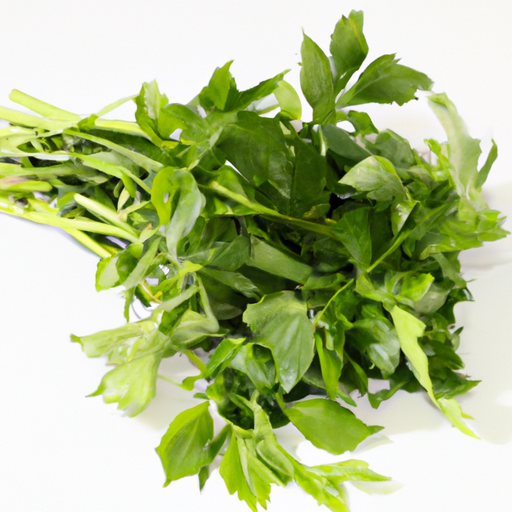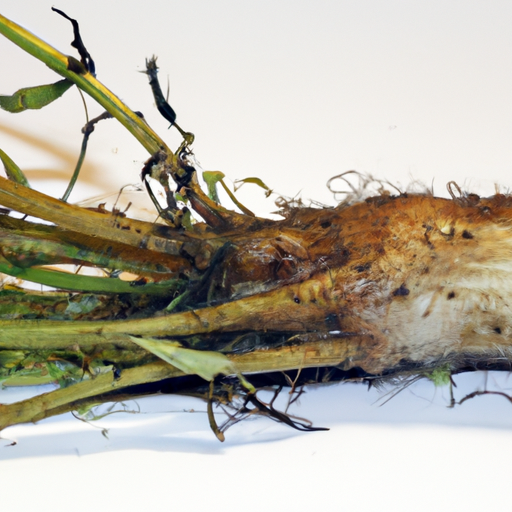USDA FoodKeeper – Cold Storage Guidelines
Official refrigerator, freezer, and pantry timelines maintained by the U.S. Department of Agriculture.
Visit USDA FoodKeeperWith its vibrant green hues and aromatic flavor, this perennial herb adds a unique twist to salads and soups. While it boasts a low risk level, it's best to use it within a week of purchase to enjoy its fresh taste, so make sure to store it in the fridge for optimal quality!


Fridge
32°F to 40°F (0°C to 4°C)
Wrap in a damp paper towel and store in a plastic bag in the crisper drawer
7 days
Yellowing leaves, slimy texture
Flavoring soups, stews, salads
Regular celery
Hey there! So, expiration dates and best quality dates for Wild Celery can be a bit confusing, but let me break it down for you. Expiration dates are usually about safety. It means that after that date, the food may not be safe to eat due to potential bacterial growth or spoilage. On the other hand, best quality dates refer to when the Wild Celery might start to lose its peak taste and texture, but it doesn't mean it's unsafe to eat. For example, if Wild Celery has an expiration date of June 1st and a best quality date of May 25th, it's safe to eat before June 1st, but it might not taste as fresh and crisp after May 25th. Personally, I tend to follow the expiration dates for safety reasons, but as long as the Wild Celery looks and smells fine, I might still use it after the best quality date, maybe in a soup or stir-fry where the texture isn't as crucial. Remember, when in doubt, throw it out!
To tell if Wild Celery has gone bad, look for any dark or slimy spots on the leaves, a strong sour or rotten smell, or a mushy and wilted texture. Fresh Wild Celery should have crisp, vibrant green leaves and a mild, earthy scent.
Hey there! When it comes to wild celery, there are a few foodborne illness risks to keep in mind. Wild celery, like any other wild plant, can harbor harmful bacteria or parasites if not properly handled or cooked. If you happen to forage wild celery, make sure to wash it thoroughly before consuming. Avoid picking it from areas where it may have been exposed to pesticides or animal waste. Symptoms of foodborne illness can range from mild stomach upset to more severe cases of vomiting and diarrhea. If you experience any unusual symptoms after consuming wild celery, it's essential to seek medical attention promptly. To stay safe, always remember to cook wild celery thoroughly before eating it. Whether you're adding it to a soup, stir-fry, or salad, cooking will help kill off any harmful pathogens. Have you ever tried making a delicious wild celery pesto or adding it to a hearty stew? Just remember to follow these safety tips to enjoy your wild celery without any worries!
Hey there! Storing wild celery can be a breeze with a few handy hacks. To keep it fresh longer, try wrapping the celery in a damp paper towel before storing it in a resealable plastic bag in the fridge. This helps maintain the celery's crispness and prevents it from drying out. If you want to get extra creative, you can also chop up the celery and freeze it in portions using ice cube trays. Once frozen, transfer the cubes to a resealable bag for easy access when cooking soups, stews, or stir-fries. Pro tip: To revive limp wild celery, give it an ice water bath for about 15 minutes. This can help perk it up and make it crisp again. Don't forget to trim the ends before storing to keep it fresh longer. Personally, I love using wild celery in salads, smoothies, and as a flavorful addition to soups. With these storage hacks, you can enjoy your wild celery for longer and reduce food waste too! Give them a try and see how they work for you. Happy cooking!
Hey there! Let's chat about wild celery – did you know it's not just a veggie you find at the grocery store? Wild celery, also known as sea celery, is a coastal plant that grows along shorelines and marshes. Historically, wild celery was valued by ancient Romans for its medicinal properties and was even used as a seasoning in their cuisine. Isn't that cool? It's been around for centuries! Culturally, wild celery has significance in some Indigenous communities where it's used for both culinary and medicinal purposes. It's amazing how nature's gifts have been cherished and utilized by different cultures throughout time. One fun fact is that wild celery is a favorite food of certain species of waterfowl, like ducks and geese. They munch on these crunchy greens like it's their version of a gourmet meal! So, next time you see wild celery growing by the shore, remember its rich history and cultural importance – it's not just any ordinary plant!
It's recommended to store Wild Celery in the fridge to maintain freshness and prevent bacterial growth. If Wild Celery has been left at room temperature for an extended period, it's best to discard it to avoid potential food safety risks.
Once you open a package of Wild Celery, it's advisable to consume it within 2-3 days for the best quality and freshness. Be sure to store it properly in the fridge to maintain its shelf life.
The type of container can influence Wild Celery's shelf life. Opt for breathable containers or perforated bags to help maintain the vegetable's crispness. Avoid airtight containers as they can lead to moisture buildup and accelerate spoilage.
It's generally safe to store Wild Celery next to other vegetables in the fridge as long as they are properly wrapped or stored in separate compartments to prevent cross-contamination. Avoid storing it near raw meats or seafood to prevent any potential foodborne illness.
Cooking Wild Celery can extend its shelf life compared to raw celery. Once cooked, store the leftover celery in an airtight container in the fridge and consume it within 3-4 days for optimal quality and safety.
Wild Celery tends to last longer in the winter months due to the cooler temperatures, which help slow down the vegetable's deterioration process. However, proper storage in the fridge is crucial regardless of the season to maintain its freshness.
When transporting Wild Celery, ensure it is kept in a cooler bag with ice packs to maintain a cool temperature and prevent wilting. Avoid exposing it to direct sunlight or high temperatures, as this can accelerate spoilage. Once you reach your destination, refrigerate the celery promptly.
Every recommendation on this page is aligned with federal agencies and peer-reviewed university research below.
Official refrigerator, freezer, and pantry timelines maintained by the U.S. Department of Agriculture.
Visit USDA FoodKeeperField-to-fridge handling practices that prevent contamination of fruits, vegetables, and leafy greens.
Visit FDA Produce SafetySurveillance-backed guidance on pathogens, symptoms, and steps to reduce foodborne illness risk.
Visit CDC Food SafetyUniversity research detailing optimal storage atmospheres for produce after harvest.
Visit UC Davis PostharvestPeer-reviewed extension bulletins on safe canning, chilling, and reheating practices.
Visit Penn State ExtensionNeed deeper reading? Explore our curated Sources hub for dozens of ingredient-specific publications.
Scan your food directly and get instant safety info using our AI-powered camera feature.
Ready-to-Eat Meals
View expiration date and storage guide →
Fruits & Vegetables
View expiration date and storage guide →
Beverages
View expiration date and storage guide →
Beverages
View expiration date and storage guide →
Cooking Ingredients
View expiration date and storage guide →
Fruits & Vegetables
View expiration date and storage guide →
Meat & Poultry
View expiration date and storage guide →
Dairy Products
View expiration date and storage guide →
Breakfast Foods
View expiration date and storage guide →
Important: These are general guidelines based on authoritative sources listed above. Always use your best judgment and when in doubt, throw it out. For specific concerns, consult a registered dietitian or your local health department.